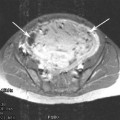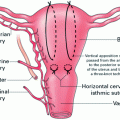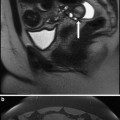John Reidy, Nigel Hacking and Bruce McLucas (eds.)Medical RadiologyRadiological Interventions in Obstetrics and Gynaecology201410.1007/174_2013_879
© Springer-Verlag Berlin Heidelberg 2013
Gynecological Assessment Prior to Uterine Artery Embolization
(1)
Gynecology and Women’s Health Institute, Center for Menstrual Disorders, Fibroids and Hysteroscopic Services, Cleveland Clinic, Cleveland, OH 44195, USA
2.6 MRI Technical Findings in UAE Failures: Repeat Procedures, the Importance of Re-imaging With MRI
3 Summary
Abstract
Benign uterine fibroids, or leiomyomas, are the most common benign tumors found in women in a gynecologic practice. Approximately 50–80 % of women have fibroids. Most women with fibroids are asymptomatic. Women with symptomatic fibroids may present with heavy menstrual bleeding, pelvic pain, leukorrhea, pressure and bloating, increased abdominal girth, and severe dysmenorrhea. However, these symptoms can mimic other gynecologic and non-gynecologic conditions. It is imperative that physicians take an excellent history and perform a thorough pelvic examination prior to recommending uterine fibroid embolization for therapy. The patient’s desire for future pregnancy should be ascertained. As a part of the evaluation it is important that the patient does not have other indications for surgical intervention such as the presence of an adnexal mass, abnormal pap test, or endometrial malignancy/endometrial hyperplasia that would be treated with surgical intervention or other necessary therapy. Hysterectomy has long been utilized as a definitive method to treat fibroids in women. Medical therapy often requires long term use of single or multiple medical therapies to alleviate fibroid-related symptoms. Uterine fibroid embolization (UFE) using particulate emboli to occlude the uterine arteries, thereby disrupting the blood supply to fibroids and leading to devascularization and infarction, has been reported to be effective in alleviating fibroid-related symptoms. Excellent gynecological assessment is essential prior to referring a patient for uterine fibroid embolization.
1 Introduction
Uterine leiomyomata are the most common neoplasm found in gynecologic practice. According to the American College of Obstetrics and Gynecology (ACOG), fibroids occur in approximately 25–80 % of all women, most commonly in those ages 30–40 years, and affect African American women in higher numbers than their Caucasian counterparts. (ACOG 2008) Fibroids are commonly the underlying cause of such symptoms as heavy menstrual periods, pelvic pain, pressure, and bloating, increased abdominal girth and severe dysmenorrhea; other associated complaints may include dyspareunia, leukorrhea, reduced fertility, miscarriage, acute or intermittent urinary retention, and/or constipation. Given the characteristics and severity of such symptoms, leiomyomas are likely to have a detrimental effect on quality of life.
Surgery has been the traditional treatment for fibroids. Myomectomy, surgical removal of leiomyomata without hysterectomy, is an option for women who wish to retain their uteri. Current surgical approaches for myomectomy include abdominal, laparoscopic, or robotic. The size, number, and location of the fibroid, as well as surgeons’ skill set, determine the route of the procedure. Surgical approaches may be associated with bleeding, postoperative fever, delayed intra-abdominal adhesions, infertility, or uterine dehiscence during pregnancy or labor. Rarely, intraprocedural bleeding may occur during a myomectomy procedure, resulting in emergency hysterectomy. Additionally, myomectomy is associated with fibroid recurrence and further surgery in 23–51 % of patients evaluated via ultrasound during a follow-up period of up to 5 years (Rossetti et al. 2001; Fauconnier et al. 2000). Given these disadvantages, myomectomy is performed less often than hysterectomy, which has been considered the definitive treatment for fibroids, as there is no possibility of post procedure recurrence.
More than 600,000 hysterectomies are performed in the United States each year, with uterine leiomyomata as the leading cause. Because it is classified as major surgery, hysterectomy for benign disorders has a number of drawbacks, not the least of which is an overall complication rate of 17–23 % regardless of approach—abdominal, transvaginal, or laparoscopic (Mäkinen et al. 2001).
Hysterectomy is not appropriate for women who wish to retain their fertility; moreover, it has significant negative impact on psychosexual health compared with less invasive procedures, even in those who have no plans for future childbearing (McPherson et al. 2005).
Hysterectomy is more expensive than UFE. The Vaginal, Abdominal, Laparoscopic Uterine Excision (VALUE) study, undertaken to assess the rates of serious complications associated with hysterectomy in more than 37,000 women in the United Kingdom, found that individuals with symptomatic fibroids experience more intraoperative and postoperative complications than women with dysfunctional uterine bleeding (McPherson et al. 2004).
Trial researchers also observed that younger women are at most risk for experiencing severe complications with hysterectomy and recommended a less invasive alternative treatment for symptomatic fibroids in this patient group (Goldberg 2007).
UFE, also known as uterine artery embolization, or UAE, has emerged as an excellent option which is nonsurgical, minimally invasive therapy that, with accruing clinical experience, is gaining widespread acceptance in North America and in Europe as a safe and effective treatment for reducing the symptoms of uterine leiomyomata. Uterine artery embolization has a high patient satisfaction rate similar to hysterectomy and myomectomy, with quicker return to work, shorter hospital stay, and return to normal activities (Gupta et al. 2012). An estimated 250,000 UFEs have been performed since 1995, when this procedure was first utilized by Ravina and colleagues (Ravina et al. 1995).
UFE involves the injection of particles, typically sized 500–900 μm, into the uterine arteries to cause occlusion, thereby disrupting the blood supply to fibroids and leading to devascularization and infarction. The result is improvement in fibroid-associated symptoms, preservation of the uterus, avoidance of general anesthesia, and obviation of the potential complications and lengthy recovery associated with surgery.
Two multicenter studies with combined cohorts totaling more than 2,200 patients recently reported long-term follow-up data for UFE-treated symptomatic leiomyomas (Goodwin et al. 2008; Spies et al. 2007). Both support the conclusion that UFE is effective and safe, with durable symptom control, few complications, and improved health-related quality of life (HRQOL).
2 Selecting Patients Most Likely to Benefit
The Task Force on Uterine Artery Embolization and the Standards Division of the Society of Interventional Radiology (SIR) recommend that UFE be offered only to women with symptomatic uterine leiomyomas who are of reproductive age but who are not interested in childbearing (Andrews et al. 2004). In this patient subpopulation, UFE is indicated for individuals with clinically documented fibroids and fibroid-related symptoms who wish to avoid surgery, particularly hysterectomy, who refuse blood transfusion for health or religious reasons; and/or who have failed medical or surgical therapy. Contraindication to general anesthesia may be another consideration.
Of the numerous treatment options available, patient selection for UFE is generally based on such factors as bulk symptoms, bleeding symptoms, and desire for future fertility or uterine preservation A patient’s ultimate choice among available fibroid therapies may depend upon the fibroid-related impact on her HRQoL, the length of convalescence that is acceptable to her, and the importance she assigns to tolerable invasiveness and symptom resolution (Manyonda et al. 2012).







